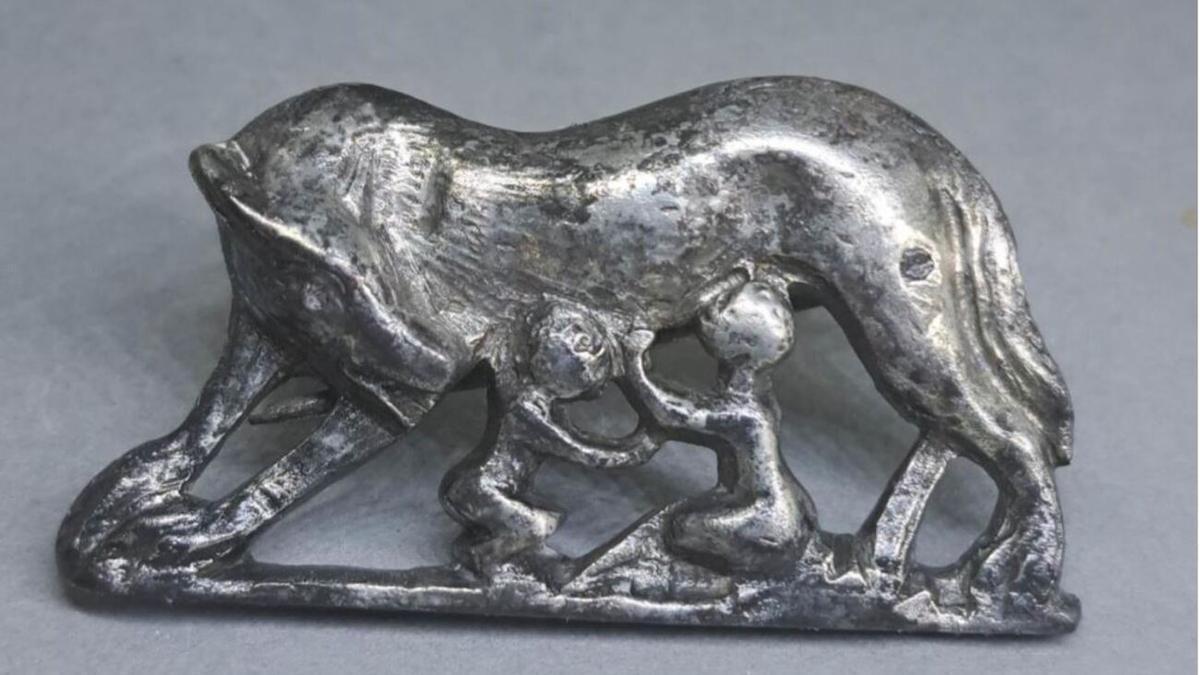Nádherná věc !!!!
Unique silver brooch of a she-wolf nursing Romulus and Remus found in Valencia
Categories: Nálezy nejenom s detektorem v západní Evropě
A rare silver brooch dating from the 2nd century was discovered during archaeological excavations of the old Roman state building Hostalot-Idlum in the Spanish municipality of Vilanova d'Alcolea. It depicts the legendary story of a she-wolf nursing the brothers Romulus and Remus, the supposed founders of Rome. According to experts, this is an exceptional artefact of first-class quality and artful craftsmanship that is second to none.
The silver brooch measures 4 cm and, although it has been badly worn, still displays fine details such as the mane of a she-wolf. The clasp mechanism and needle on the back is still functional. The jewel represents the well-known founding myth of Rome: "The find is very interesting because there are very few parallels and because it dates back to the 2nd century. There are very few parallels," said Josep Carbó, head of the archaeological research.
The "mansion" was part of the official postal service of the Roman Empire. It served as a resting place for officials and travellers, and included a horse exchange service to maintain an efficient postal and transport service. The building must have been built at the same time as the nearby Via Claudia Augusta, between 15 and 7 BC. It was occupied and used in various ways until the 5th or 6th century. Later, in the 16th century, the inn that gave the place its name was built over the Roman ruins at the junction of the royal road El Camino Real.
The building was first discovered in 1923 by archaeologist José Senent. In 1965, while digging in the dirt, a local resident found a bronze statue about 80 centimetres high, which he sold for the weight of the metal. In 1988, an amateur detectorist unearthed three metal objects: a large phallus with a hanging ring, a small phallic amulet and a fibula.
In the 1990s, the best-preserved milestone in the territory of Valencia was discovered nearby, which is 2.72 metres high and dates from 213-214. Around the same time, a female burial with votive glass and two large golden pins of Germanic type were found near the building. Until recently, agricultural work was carried out in the area, during which other Roman artefacts were found.
The latest excavations have opened up new avenues of research and interpretations are now being considered as to the chronology and functionality of the structure, whether as a domestic complex, an excavationremains of basins and a few fragments of ceramic pipes that may have been used to channel steam and water.
Roman Němec
Heritagedaily.com, epe.es, thehistoryblog.com

Silver brooch of a nursing she-wolf before cleaning

after cleaning

the other side with the preserved switch
The article is included in categories:
- Archive of articles > Archaeology > Finds and rescue research abroad > Nálezy nejenom s detektorem v západní Evropě
Post
Prosim tě, byl to Rébus, to ví každý malý dítě, Romulus a Rébus, to je známý římský duo... 
To bylo tak: Debil v divadle a já běla prebiéru
Jsem někde čet že je neodkojila vlčice, ale prostitutka. V latině je stejný výraz pro obojí lupa. Taková spona s kojící prostitutkou by taky nemusela být z uměleckého hlediska marná. 










